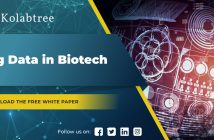Social science is in the midst of a data revolution. Education, economics, behavioural sciences, history, archaeology, sociology – all these fields are increasingly becoming dependent on the interpretation of large data sets. Organizations worldwide are already exploiting the power of data science – using the capture, analysis and visualization of complex data to drive sound business decisions. Big data is being increasingly used by companies for analyzing performance, predicting growth and for increasing efficiency. However, most of the data that we collect has the potential to be used for social good as well. Data, however big or small, gives us insights that can find application in areas such as policy-making, urban planning, and tackling poverty, hunger and hygiene.
Data is collected from a vast variety of sources – from the web, mobiles, buildings, grocery stores, and even trash cans. It possesses scientific, social, political and economic value. The amount of data we have access to is increasing on a daily basis, especially through recordings of human interaction in the digital world. How then, can this data be ‘filtered’ so that social scientists can develop methodologies and solutions effectively?
Here are some interesting examples of how analytics is being used to solve real-world challenges.
Big data for detecting Ebola: An algorithm detected Ebola outbreak before humans
A week before the Ebola outbreak was identified, HealthMap, a mapping tool that tracks the spread of diseases, had already detected the disease. The disease-monitoring tool was able to pick up a “Mystery hemorrhagic fever” on March 19 . The organization alerted WHO, which confirmed the outbreak of Ebola officially on March 22.
Using data from social media, news articles, government bodies, and healthcare blogs, HealthMap’s algorithm scans websites, picks up data, filters it and extracts useful information that helps identify and classify diseases. Once the data is obtained, a panel of experts in epidemiology and infectious diseases review it to make sure that it’s as accurate as possible.
HealthMap also provides an interactive map which gives you an idea of the case counts and related news reports of the disease, also allowing you to track its spread.
Big data for a safer city: New York uses data analytics to identify fire-prone buildings
An eight-member squad of New York’s MODA (The Mayor’s Office of Data Analytics) has been using data analytics to make the city safer and more efficient. Databridge is a data-sharing platform that helps integrate geographical data with feeds from agencies and organizations. An analysis of this data leads to a wealth of information that helps analysts identify and target issues related to cleanliness, crime, urban planning and safety.
For example, the squad was able to identify restaurants that were dumping oil into sewers instead of using a carting service by comparing a list of restaurants without carters to the geospatial data on the sewers. This gave them a far more efficient way of finding restaurants that were at fault than the traditional way of sending someone from the health department to the neighbourhood, with the hope of catching someone red-handed.
New York’s Fire Department (FDNY) is also using data analytics to identify buildings that are more prone to risk of fire. The inspection systems draws data from the FDNY’s warehouse, as well as from the relevant government bodies and agencies. Based on various criteria such as the construction material, building’s fire protection features, the last inspection date, etc. the system is able to do a quick analysis of the buildings that are most at risk. This significantly reduces the workload of firefighters, who manually inspect about 50,000 buildings annually.
Big data to fight cybercrime: Welsh Government and Cardiff University
Data analytics has found application in targetting cybercrime, as demonstrated in a recent project undertaken by Cardiff University and the Welsh Government. A study of the data obtained from Twitter showed that there was a trend: hate speech increased after an important (and controversial) event, such as the UK referendum. Professor Matthew Williams from the University’s Social Data Science Lab and Dr Pete Burnup (Co-Director of the Social Data Science Lab) developed, along with the Welsh Government, online hate speech guides that help spread awareness about the laws and prevention of cyberhate.
Data science and statistical tools for social scientists
It is becoming imperative for a social scientist to be able to work with data and communicate data-driven findings effectively. Here is a list of tools that are useful for analytics in social science research:
–Chorus Analytics, for collection and visualization of data obtained from Twitter for social science research
–DiscoverText, which provides cloud-based software tools to quickly evaluate large amounts of text, survey, and Twitter data
–Digital Footprints, for collecting closed Facebook data with user consent (available to academic researchers only)
-The Data Documentation Initiative (DDI), an international standard for describing the data produced by surveys and other observational methods in the social, behavioral, economic, and health sciences
–NodeXL, a template for Microsoft Excel, that makes it easy explore network graphs
-Programs like R, SAS, SPSS and Excel for statistical analysis
With the developments in the world of data science advancing at breakneck speed, social scientists need to close in on the skills gap. Collaborations between social scientists and data scientists can lead to exciting innovations. Data science experts can also be hired by social scientists to work on short-term projects.
Do you know of any interesting applications or tools that can be used by social scientists for data analysis? Feel free to suggest them in the comments below, or Tweet to us.
—-
See also: Five interesting projects in digital humanities
Need to hire a data analytics expert? Consult a data scientist on Kolabtree. It’s free to post your project!







